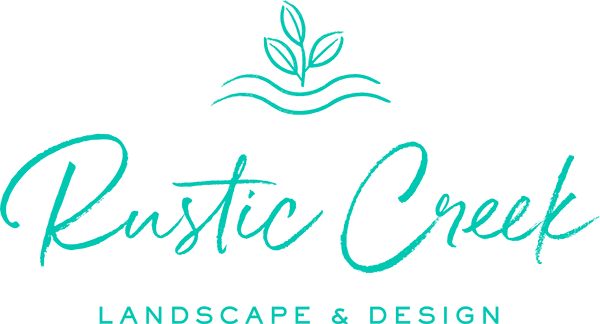River rock is known for its smooth texture, earthy tones, and versatile look. It’s a popular choice for many landscape designs, with a unique ability to blend seamlessly into traditional and modern yards.
Still, a time-honored favorite material doesn’t always have to be used in the same ways, and one of the most appealing things about river rock is how many different uses it has.
Here are some creative ways to include river rock in your next landscaping project.
1. Create a dry riverbed.
Dry riverbeds create the look of a stream or river, without the need for actual flowing water. Plus, they can help manage drainage issues by directing rain runoff.
To create a riverbed in your backyard, dig a shallow trench, and then line the trench with landscape fabric (to help prevent weeds). Arrange the river rocks along the lined trench, using various sizes, shapes, and colors to create a natural look.
If you want to take your riverbed to the next level, place some larger boulders along the edges of the trench, along with some drought-tolerant grasses or shrubs.
2. Use for garden borders and edging.
Because of its aesthetically pleasing look, with a round shape and smooth texture, river rock is a fantastic option for a border material.
Use river rock to frame flower beds, create clean lines around walkways, or even define separate zones within your garden. Choose sizes and colors that work for your specific needs and that complement the rest of your landscape design.
3. Incorporate into water features.
As its name suggests, river rock is a staple in water feature designs. It adds a natural touch to fountains, ponds, waterfalls, and more.
Use larger river rocks to line the outside edges of your water feature, and fill in the gaps or cover the base with smaller rocks or pebbles. The smooth texture the rock will allow water to flow freely and pleasantly, while also enhancing the calming sounds of flowing water. Finish your water feature with aquatic plants and statement lighting, and you’ll have a beautiful focal point for your yard.
4. Use as a mulch alternative.
River rock is a durable alternative to traditional wood mulch. It doesn’t decompose, lowering your landscape’s maintenance and upkeep demands.
Use river rock for xeriscaping, gardens with succulents or cacti, or anywhere else you want to retain soil moisture and reduce week growth. As an added bonus, because the rocks are somewhat reflective, they will help keep the soil cooler as temperatures rise.
5. Create inviting pathways.
Large, flat slabs of rock or concrete are typically used to create stepping stones in a landscaped yard. While many choose to fill in the gaps between stepping stones with grass or turf, you can also use river rock to create a unique, low-maintenance, and functional pathway.
If you choose to use river rock in this way, be sure to compact your base and then add a layer of sand before laying your rocks. This will help everything stay stable and level.
6. “Grow” a rock garden.
Rock gardens are a great way to add a little visual interest to your yard. By combining river rock with larger stones, different types of gravel, and drought-tolerant plants, you can create an appealing, low-maintenance space that adds to your yard’s calming vibe.
Tip: If you have any “tricky” spots in your yard, such as sloped areas or spots where grass or other plants struggle to thrive, a rock garden is a perfect solution.
7. Use around a fire pit.
A fire pit is a cozy addition to any backyard, and river rock is a safe and attractive choice of material that will help you define the area. Use medium-sized rocks to create a border in your desired shape, and then use smaller pebbles to cover the rest of the ground. This will create an elevated, sophisticated look for your fire pit while also helping to keep the area clear of mud and debris.
8. Add decorative accents.
When it comes to decorating with river rock, the possibilities are endless. Fill planters with small river rocks to add natural texture to your outdoor space. Use them as a sturdy, low-maintenance base for sculptures or other garden art. Use them as a base around trees. Arrange them in patterns or shapes to create a custom mosaic in an open space.
Get creative! River rock is easily used and removed, so it’s a low-stakes way to add a little visual interest to your outdoor area.
These creative ideas are just the tip of the iceberg when it comes to using river rock in your landscape design. Whether you want to solve drainage issues in your yard, reduce overall maintenance, or simply add more visual interest to your yard, river rock should be at the top of the list for materials to consider. It’s stylish, sustainable, and versatile enough to help you bring any landscaping vision to life.

